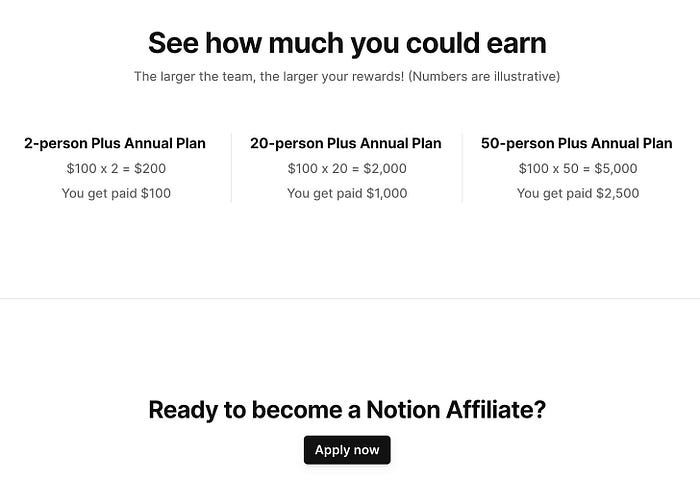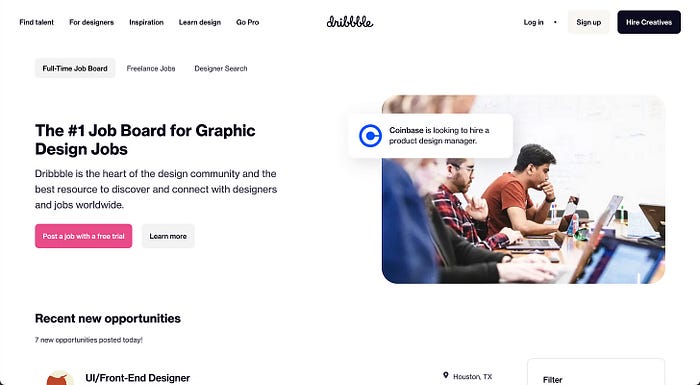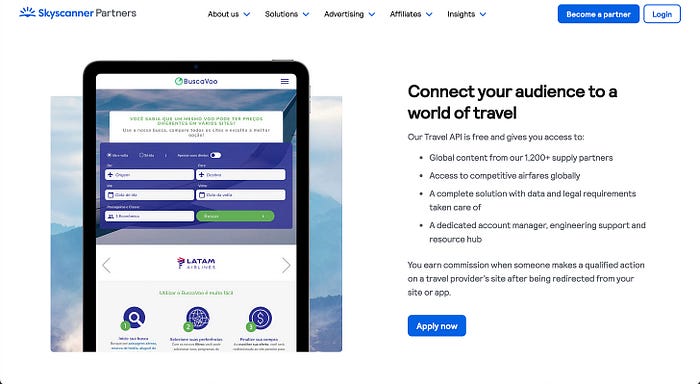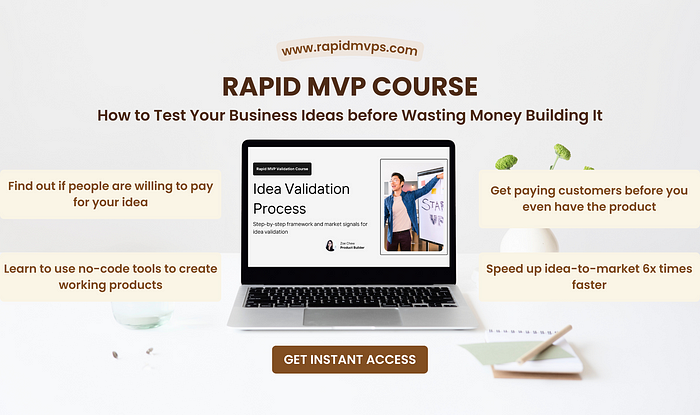How to Create Multiple Income Streams as an Internet Business
This post is one of my Multi-Part Product Guide series. You may also like my top-rated guides such as MVP Frameworks, Validate Niche Markets & NoCode MVP Tutorial. ::: Join the newsletter 💌:::
Digital Native Businesses are frequently built to leverage Internet technologies that cater to the preferences and behaviors of today’s modern digital consumers.
Today, I’ll share the product tips that I frequently used in my consulting to help you explore new revenue sources, expand product offerings, and create multiple income streams for digital native businesses.

Method #1: Affiliate marketing
Convert your raving fans into brand ambassadors who work tirelessly to promote your products.
What if you could hire an army of promoters without paying them a full salary? The answer is affiliate marketing.
Leading SaaS companies like Notion, Hubspot, and Semrush have used this strategy to expand their revenue streams.
Here’s how it works: You recruit existing customers, other businesses, or influencers to participate in referral campaigns, and they earn a commission on each sale made through their unique referral link.

How to implement:
- Create a compelling affiliate program page that clearly outlines the commission rates you’ll offer for each successful referral or sale.
- Create a FAQ section that specifies the target audience, explains how the referral process works, clarifies how earnings are transferred, and outlines the terms and conditions.
- Create templates for promotional materials that affiliate partners can easily use (e.g., copywriting, banners, graphics, social media posts).
- Write an engaging email to your existing email list, introducing the affiliate program, earnings, sign-up link, and inviting them to join.
Tools to use:
- Refersion.com is an affiliate management and tracking platform dedicated to direct-to-consumer (DTC) and e-commerce brands.
- Growann.com is a SaaS-focused affiliate platform that offers comprehensive partnership and creator ambassador management.
- PartnerStack.com is catered to SaaS brands and enterprise businesses, providing tools to help recruit, track, and scale referral marketing campaigns.
Method #2: Start an online marketplace
If your product has strong network effects, monetize it!
You can increase revenue streams by building an online marketplace around an existing product, whether it’s an app, an eCommerce site, SaaS, and so on.
Rather than operating as a standalone product, you add value by establishing a valuable network that connects buyers and sellers, facilitating product or service discovery, value exchange, and transactions via your platform.
For example, Dribbble started as a UX inspiration site and now monetizes with a job board that connects freelance designers with companies looking to hire.
Canva is more than just a design tool. It took a similar approach with Canva Creator, a marketplace where creators can sell their template designs to businesses.
Similarly, Shopify launched Shopify Collabs, a marketplace that allows eCommerce brands to find influencers to promote their products in a centralized marketplace.

How to implement:
- Identify your ecosystem stakeholders. E.g. Who are the buyers, end consumers, or suppliers you want to onboard on your marketplace?
- Figure out the revenue model. You can monetize a marketplace by charging fees, revenue sharing, or commissions on successful transactions. Sellers pay a percentage of their sales revenue to the platform, while buyers may also incur transaction fees.
- Build the marketplace with features that allow two-sided or multi-sided users to create their profiles, list their inventory, engage in conversations, transact, and track activities.
Tools to use:
- Sharetribe.com for marketplace site design, user management, and inventory listing suitable for two-sided or multi-vendor marketplace models.
- Mangopay.com is a customizable payment tool for all kinds of marketplaces.
- GetBalance.com is a payment tool specializing for B2B eCommerce marketplaces.
Method #3 Offer API products
Help people create apps and expand product functionalities through easy access to valuable data points
Launching an API is a great way to generate additional revenue for your company.
You can create new services by repackaging raw data from your existing business as an API product that allows developers to quickly create custom apps and build on top of your product’s ecosystem.
You can monetize an API product in several ways, including pay-per-use, subscription, volume-based usage, and licensing.
For example, Skyscanner offers API that provides access to prices for flights, hotels, and car rentals. Pricing starts from $15/month (Pro) for 12,000/month call requests.
Airbnb did this with its partners-only API that offers accommodation listing data such as property descriptions, images, location details, availability, pricing, and guest reviews.
Crunchbase API provides developers with data points such as organization descriptions, contact information, funding details, and so on.

How to implement:
- Start by identifying features that can enhance applications or services in your niche industry.
- Next, identify valuable data you can monetize through your API. Which data points or information from your platform are in demand and can be of high value to other businesses or developers?
- Make something programmatic by transforming these data points into a well-structured and accessible API product.
Tools to use:
- Xano.com automatically creates and documents your basic CRUD API operations, making it easy to get, send, and delete data from your database.
- Mintlify.com uses AI to generate user-friendly API documentation that is SEO-optimized.
- Airops.com generates code and SQL queries based on prompts using AI.
Bonus Tips:
- Focus on solving new problems for existing customers, which can uncover potential solutions for additional income streams. [ 📘Guide: The Problem-First Mindset ]
- Explore niche opportunities by going beyond your existing product categories, target audience, segment, use cases, etc.
- Map out all the riskiest hypotheses about the new revenue stream you want to test. [ 📕Guide: Are People Willing To Pay? ]
- Launch a Minimum Viable Product (MVP) to validate riskiest assumptions. It can be as simple as a landing page with core benefits and early-stage usable features. [ 📙Guide: Optimize Your MVP For More Signups ]
- Gather feedback from early adopters, iterate, and refine the new product offering.
Update 2024: The Ultimate Idea Validation Framework
Working on new product ideas? I’ve combined various tactics, frameworks, and processes to determine whether your product ideas have the potential to be monetized.
Click here to learn ::

